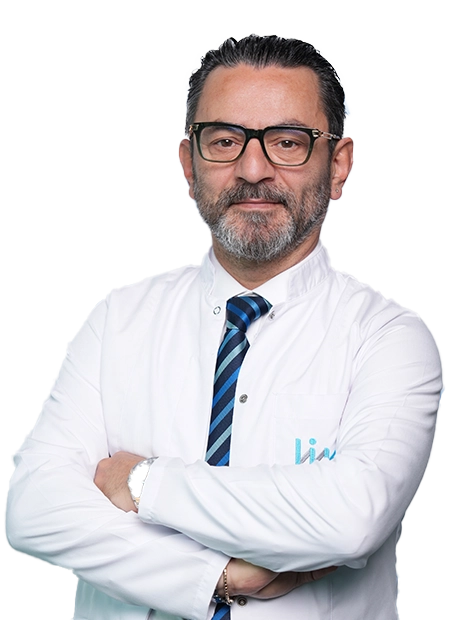Kyphosis treatment is an often overlooked yet crucial aspect of spinal health. Kyphosis, characterized by an excessive outward curvature of the upper back, can significantly impact spinal health, leading to a hunched posture and potential discomfort. This condition, often referred to as a "hunchback" or a rounded back, manifests in various forms and severities, affecting individuals across different age groups. Beyond its visible effects on appearance, kyphosis can impede spinal flexibility, hinder normal movement, and sometimes cause discomfort or pain. Early detection and timely treatment play pivotal roles in addressing kyphosis, allowing for intervention strategies that mitigate its progression and minimize associated complications. Let us delve into the details of kyphosis treatment, exploring diverse approaches tailored to different age groups and severity levels to empower individuals with knowledge for better spinal health management.
Understanding Kyphosis Treatment Options
Understanding Kyphosis Treatments involves a multifaceted approach to improve spinal alignment and alleviate associated discomfort.
- Physical Therapy Exercises for Posture Correction: Physical therapy is a cornerstone in kyphosis management, focusing on strengthening core muscles and improving flexibility. Targeted exercises aid in correcting posture, alleviating strain on the spine, and enhancing overall spinal health. These routines often involve stretches, strengthening exercises, and posture-focused movements tailored to the individual's needs.
- Bracing for Managing Moderate Cases: Bracing plays a crucial role in moderating the progression of kyphosis, particularly in adolescents with developing spines. Customized braces aid in correcting spinal alignment, reducing curvature, and providing essential support. Regular use of braces, under professional guidance, can significantly contribute to preventing further curvature and promoting better spinal alignment during growth phases.
- Medications for Pain Management: Pain associated with kyphosis can be managed through various medications, including nonsteroidal anti-inflammatory drugs (NSAIDs) or muscle relaxants. While these medications primarily address discomfort, they are often integrated into treatment plans to enhance the patient's quality of life, enabling them to engage more effectively in physical therapy and other corrective measures.
Seek advanced kyphosis treatment at Liv Hospital in Turkey for treatment for kyphosis in the elderly.
Cervical Kyphosis Treatment
Cervical Kyphosis, characterized by an abnormal outward curvature of the cervical spine, presents unique challenges in its treatment approach. This condition alters the neck's natural curvature, impacting spinal alignment and potentially causing discomfort or neurological issues. Treatment options for cervical kyphosis often differ due to the delicate nature of the cervical spine. Precision is paramount in managing this condition, given the spine's sensitivity and its proximity to critical nerves and structures. Therapeutic interventions may include specialized exercises, traction, or bracing tailored to the cervical region's curvature. Surgical procedures, when necessary, require meticulous planning and execution to ensure minimal impact on nerve function and maintain stability. Precision in treatment becomes crucial in preserving neck mobility and preventing potential complications.
You can embark on your journey to spinal wellness with Liv Hospital in Istanbul, offering tailored solutions for kyphosis treatment.
Kyphosis Treatment in Adults
Treatment for kyphosis in adults necessitates tailored approaches that address the curvature and potential challenges associated with this condition. Exercise regimens are pivotal in managing kyphosis in adults, aiming to strengthen core muscles, improve posture, and enhance spinal flexibility. However, challenges arise due to factors like muscle stiffness, degenerative changes, or pre-existing conditions, which may limit the range of exercises individuals can perform comfortably. Treatment approaches often encompass targeted exercises, such as stretching routines, strength-building exercises, and posture-focused movements, designed to alleviate discomfort and enhance spinal alignment. Additionally, lifestyle modifications and ergonomic adjustments may be recommended to mitigate stress on the spine.
You can choose Liv Hospital in Turkey for specialized kyphosis treatment, where excellence and innovation converge for your spinal health.
Treatment for Kyphosis in the Elderly
Treatment of kyphosis in the elderly demands a nuanced approach that accounts for age-related considerations and potential complications. Specialized attention is directed toward employing gentle exercises and modifications tailored to accommodate the limitations commonly associated with aging. Gentle exercise routines are crucial, acknowledging reduced mobility and potential frailty in the elderly. Pain management strategies play a pivotal role in improving the quality of life for older adults dealing with kyphosis. Given the increased susceptibility to complications such as osteoporosis or arthritis, pain management becomes paramount, often involving a combination of medications and non-pharmacological interventions. Considering the potential risks of surgery and the complexity of recovery in older adults, non-invasive treatment methods take precedence in enhancing comfort and mobility.
Don't compromise on your spinal health. You can consult Liv Hospital in Istanbul for top-notch kyphosis treatment, shaping the future of international healthcare.
Surgical Interventions and Advanced Treatments
Surgical interventions stand as a vital option in the treatments for kyphosis in severe cases where conservative methods prove insufficient. Surgery is typically considered when the curvature poses a significant risk to spinal health, causing neurological complications and severe pain, or when conservative treatments fail to address the condition adequately. Surgical procedures for kyphosis often involve:
- Spinal Fusion: This procedure involves joining two or more vertebrae together using bone grafts or hardware such as rods, screws, or plates. It aims to stabilize the spine, correct the curvature, and prevent further progression of kyphosis.
- Osteotomy: In cases of severe curvature, surgeons may perform an osteotomy, which involves cutting and reshaping the vertebrae to improve alignment and reduce the curvature of the spine.
- Instrumentation: Surgeons utilize specialized hardware, such as rods, hooks, or wires, to realign and stabilize the spine. This instrumentation helps maintain proper spinal alignment and support.
- Vertebral Column Resection: Reserved for extreme cases, this procedure involves removing an entire vertebra to correct severe deformities. It allows for significant curvature correction but is a complex surgery requiring expertise.
* Contents of this page is for informational purposes only. Please consult your doctor for diagnosis and treatment. The content of this page does not include information on medicinal health care at Liv Hospital .
